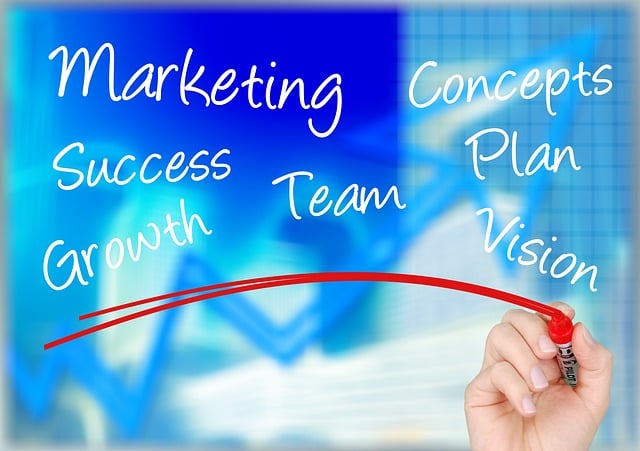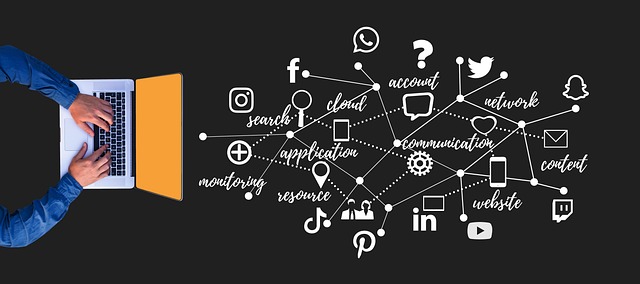AI visual analytics is reshaping the restaurant industry by offering advanced tools for AI visual analytics for menu design. Through analyzing customer behavior data, sales trends, and social media feedback, this technology enables restaurants to create highly personalized and visually engaging menus. By leveraging AI algorithms, restaurateurs can predict popular dishes, optimize pricing, and enhance sourcing strategies, leading to improved operational efficiency, higher customer satisfaction, and increased revenue.
“Discover the transformative power of AI in revolutionizing data visualization for restaurant menus. In an era driven by insights, ‘AI-Powered Data Visualization’ offers a comprehensive guide to unlocking menu design secrets. We explore how artificial intelligence enhances visual analytics, providing a competitive edge. From understanding customer preferences to creating captivating visuals, this article delves into practical applications. Learn how AI visualizations can engage patrons and optimize menu choices, ensuring success in the competitive culinary landscape.”
- Understanding AI-Powered Data Visualization: Unlocking Insights for Menu Design
- The Role of AI in Enhancing Visual Analytics for Restaurant Menus
- Practical Applications: AI Visualizations for Creating Engaging and Effective Menus
Understanding AI-Powered Data Visualization: Unlocking Insights for Menu Design

AI-powered data visualization is transforming how businesses, especially in the restaurant industry, approach menu design. By leveraging AI visual analytics for menu design, restaurants can gain deep insights into customer preferences, ordering patterns, and demographic trends. This technology enables them to make data-driven decisions, ensuring their menus cater to a diverse range of tastes and dietary needs.
With AI visual tools, menu engineering becomes more precise. Restaurants can analyze vast amounts of sales data, customer feedback, and social media trends to identify popular dishes, emerging preferences, and underperforming items. This information is then visualized through interactive dashboards, heatmaps, and predictive models, allowing chefs and managers to optimize their menus in real-time. As a result, menu design becomes more strategic, enhancing the overall dining experience and boosting revenue.
The Role of AI in Enhancing Visual Analytics for Restaurant Menus

In the realm of restaurant business, AI-powered data visualization is transforming the way menus are designed and experienced. By leveraging AI visual analytics for menu design, restaurateurs can gain valuable insights into customer preferences, dietary restrictions, and ordering trends. This enables them to create more appealing and personalized menus that drive sales and enhance customer satisfaction.
AI algorithms can analyze vast amounts of data from point-of-sale systems, online orders, and customer feedback to identify popular dishes, peak ordering times, and even predict future demands. Armed with these insights, restaurant owners can make informed decisions about menu pricing, ingredient sourcing, and promotional strategies. This not only optimizes operational efficiency but also fosters a more engaging dining experience tailored to the diverse tastes and needs of patrons.
Practical Applications: AI Visualizations for Creating Engaging and Effective Menus

AI visual analytics has found a practical application in the restaurant industry, revolutionizing menu design with engaging and data-driven visuals. By leveraging AI technologies, businesses can create dynamic menus that not only enhance the customer experience but also optimize sales. For instance, AI algorithms can analyze historical sales data to identify popular items, dietary trends, and pricing preferences, allowing for personalized recommendations and visually appealing arrangements.
These intelligent systems can automatically generate visual representations, such as heatmaps or interactive graphs, to showcase menu items’ performance. This real-time data visualization enables chefs and restaurateurs to make informed decisions about ingredient sourcing, menu pricing, and promotional strategies. As a result, AI-powered menus offer a unique and immersive dining experience while ensuring that businesses stay competitive in the market.
AI-powered data visualization is transforming the way restaurant menus are designed, offering a new level of engagement and insight. By leveraging AI, businesses can unlock valuable data analytics, enabling them to create visually appealing and effective menu designs that cater to their customers’ preferences. This technology ensures that menu choices are not just visually enticing but also strategically organized based on consumption patterns, helping restaurants optimize their offerings and enhance the overall dining experience. With its ability to simplify complex data into intuitive visuals, AI visual analytics for menu design is indeed a game-changer in the hospitality industry.
